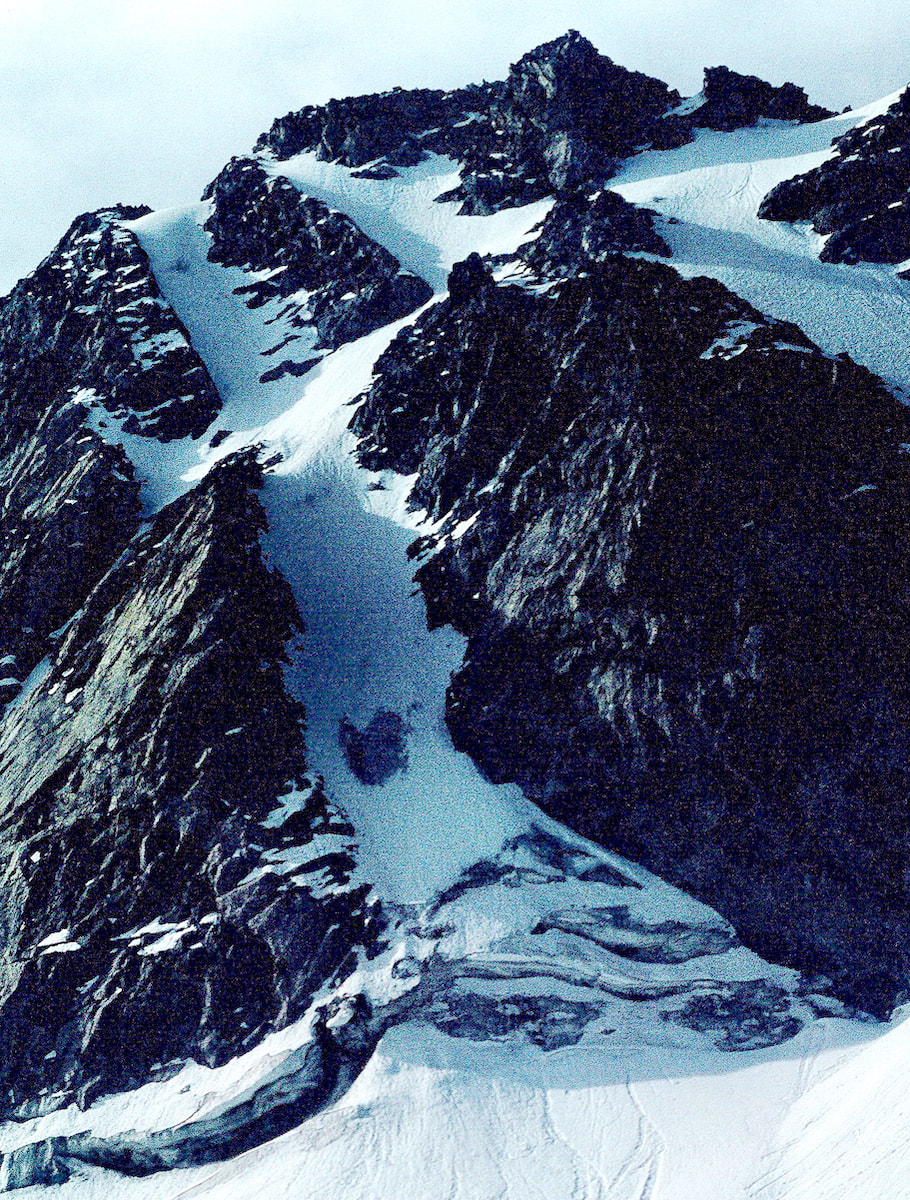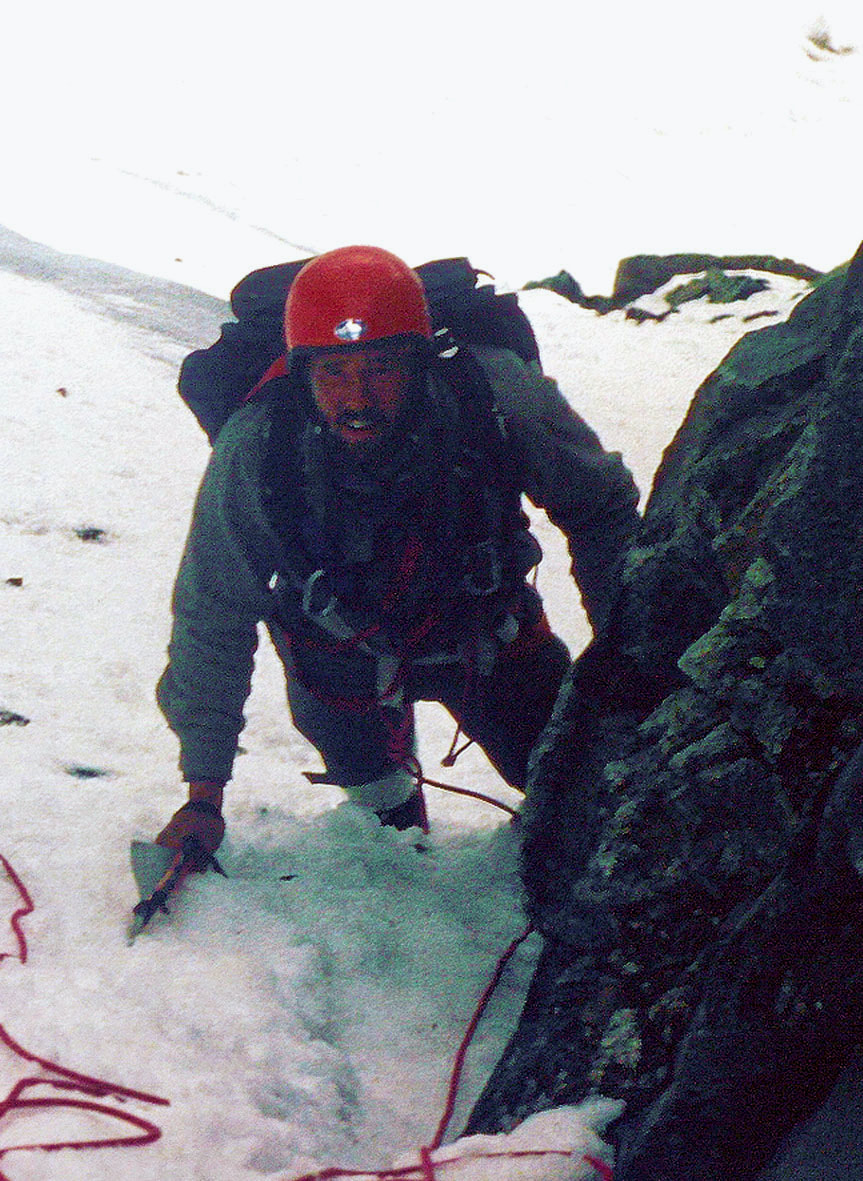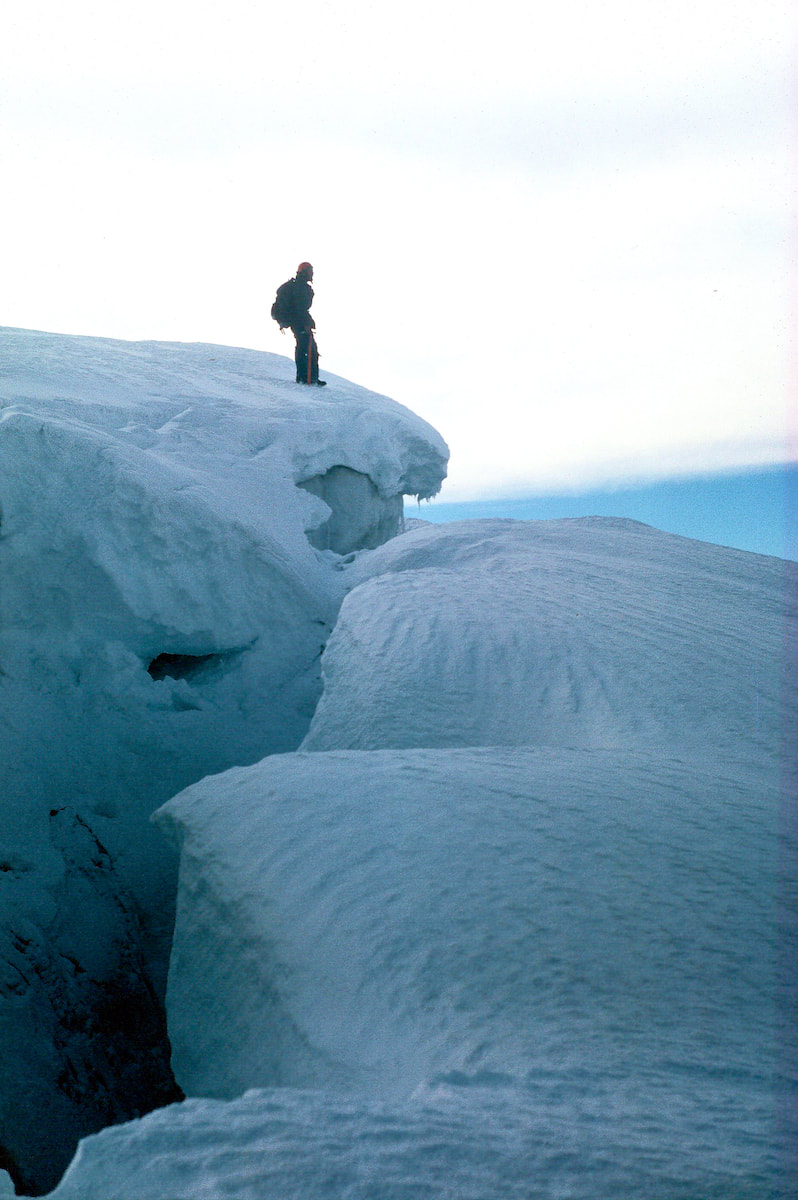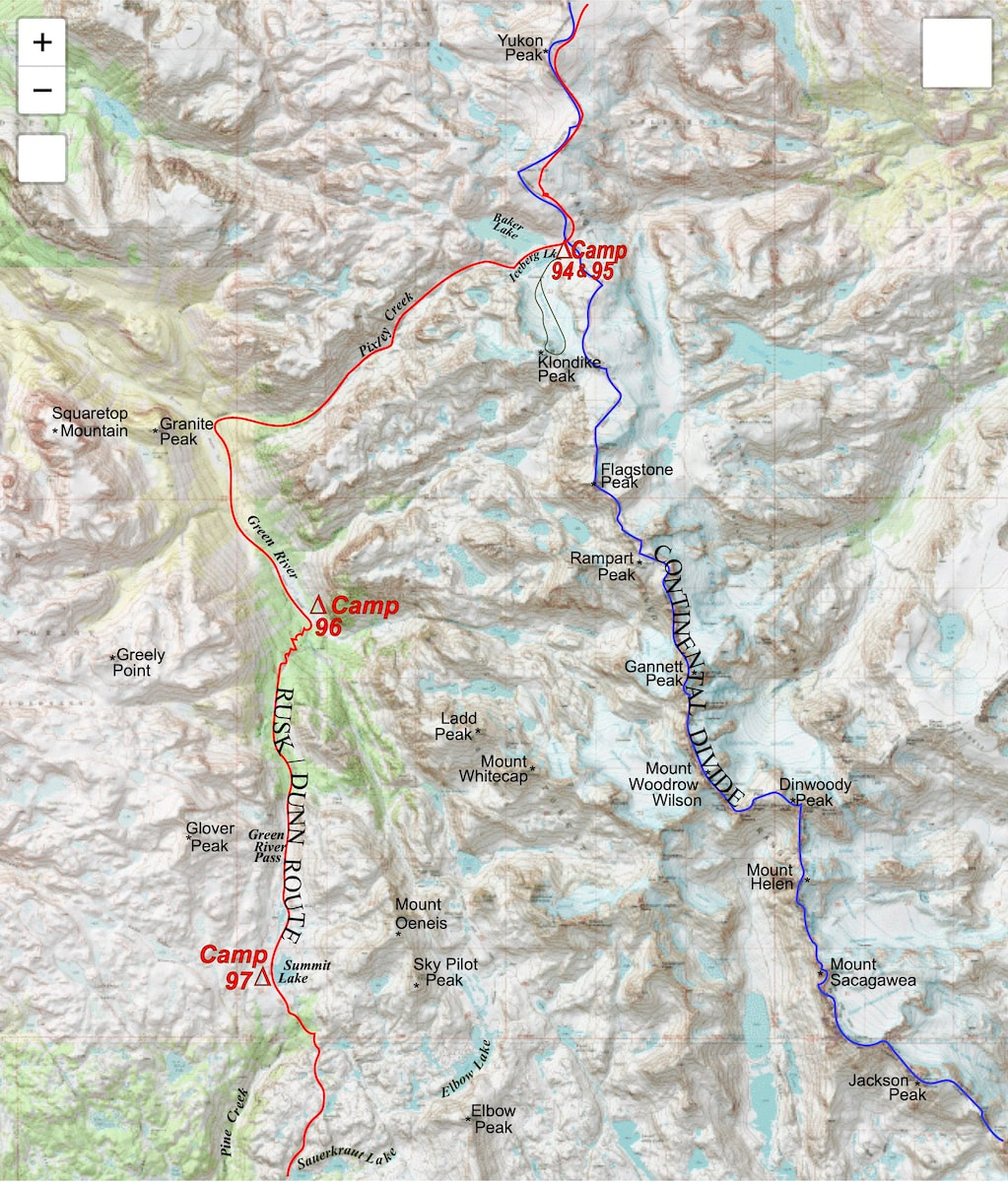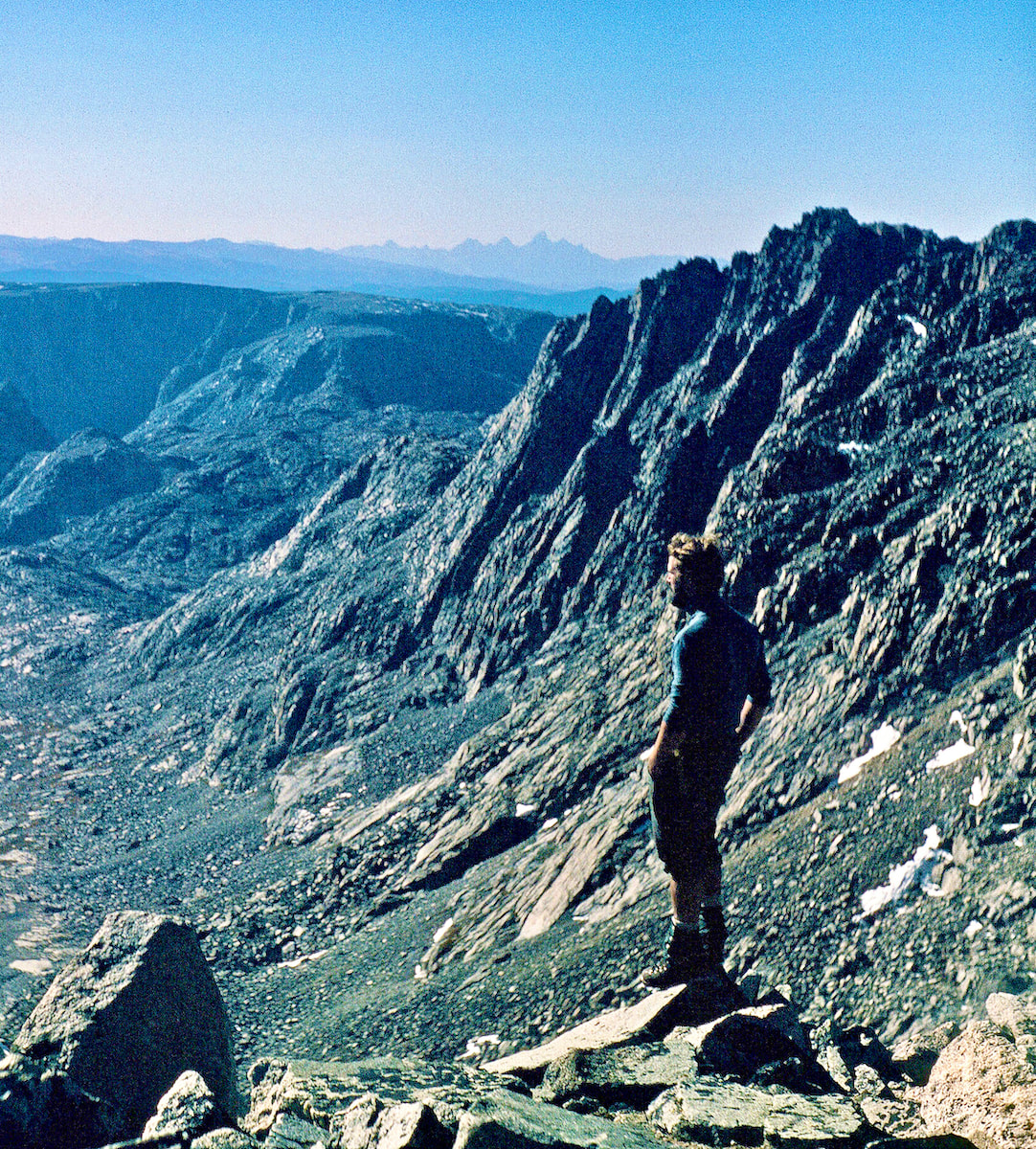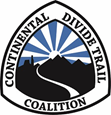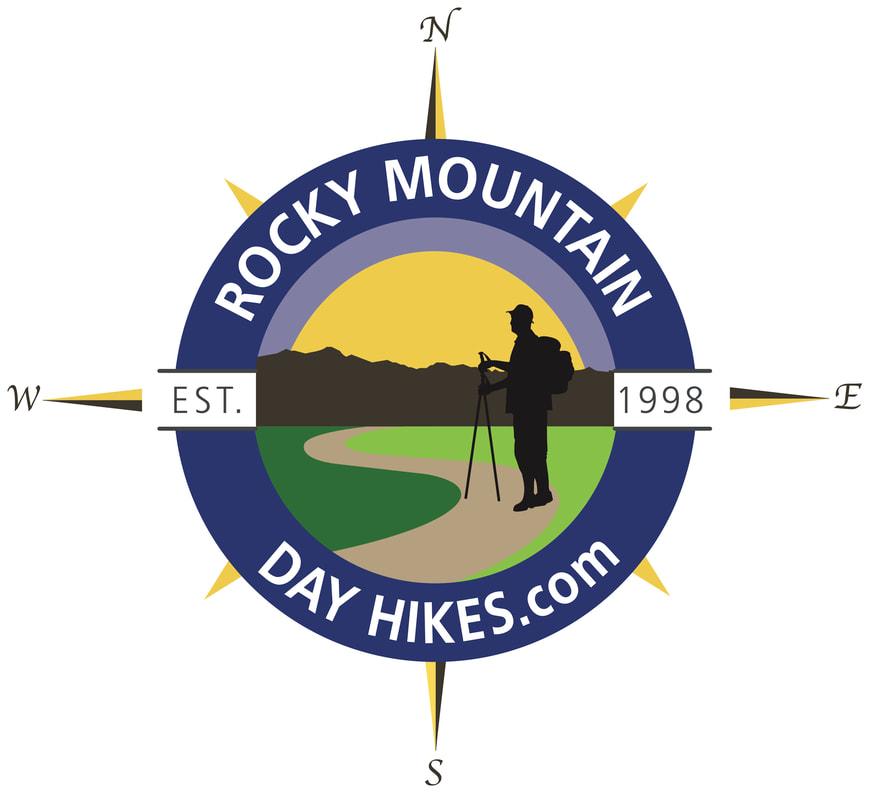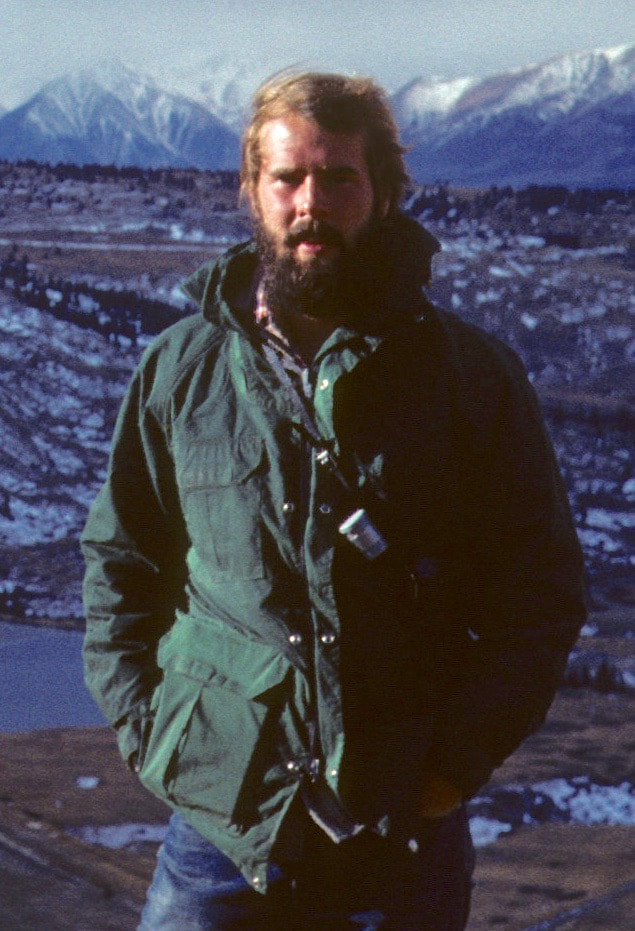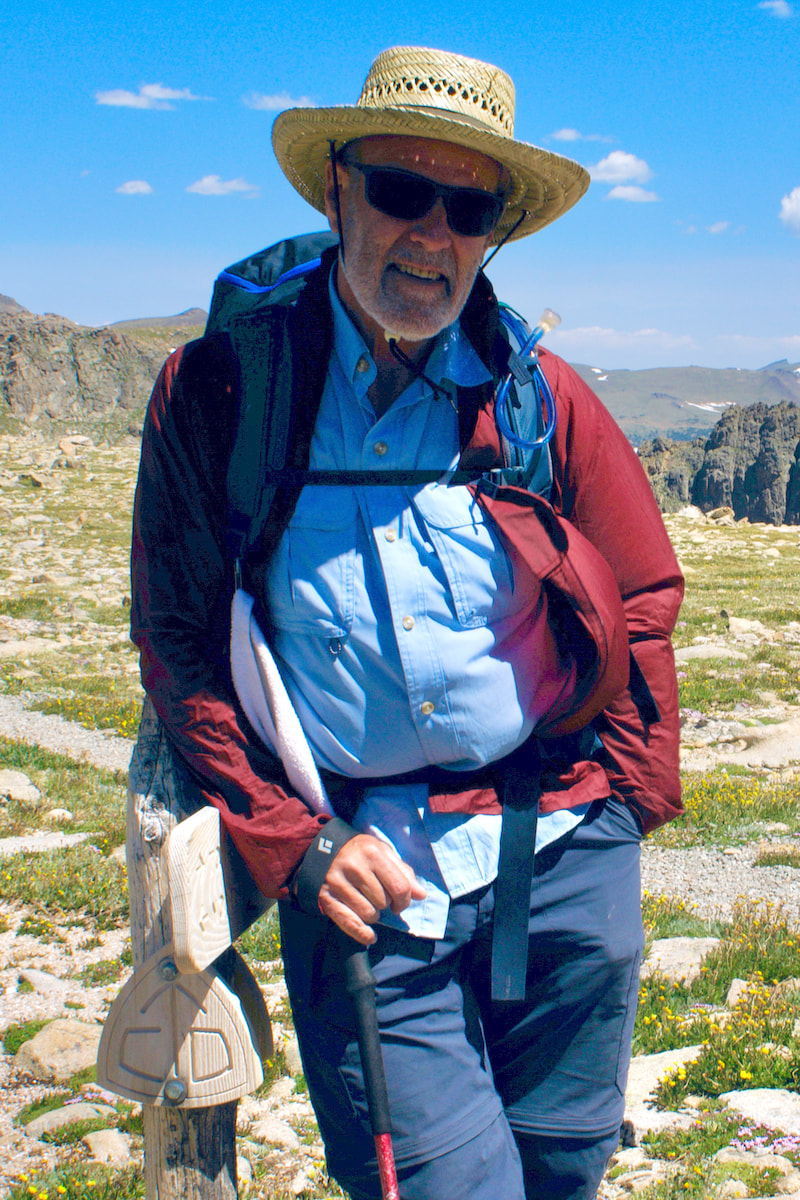The Continental
|
|
September 5th & 6th Wind Rivers, WY (Go to Pt 1) Holyshit was right, we were incredibly exposed at the top of the couloir, and with metal crampons strapped to our feet, metal ice axes in hand and metal climbing gear slung around our necks, we were nothing more than mobile lightning-rods.
protection; if one of us did happen to slip and fall in the panic of the moment, being roped together with no protection meant we were both going to get plucked off the mountain. But that didn’t seem to matter at the moment.
By now, lightning was striking the summit of Klondike, not even 300 yards from where we sat crouched under the rocks, and the noise from the thunder was deafening. Seconds turned to minutes as I unknowingly clung to Craig’s arm, in a ‘take-cover’ kind of way, and wished with all my wishing power for the whole thing to just blow over, real quick-like. Each flash followed by an instantaneous crash was a huge jolt to the system, felt deep inside the body, and with the radio wave sound of electricity in the air the lightning seemed to be honing-in on the rock outcrop sheltering us. I looked at Craig who looked straight back at me with terror in his eyes, which had to be identical to mine since I thought for sure we were about to get fried. It took about 10 minutes for the deadly part to pass and it was, by far, the longest 10 minutes of the day. Of course, once everything was cool with the world again, it was back to black humor but also mixed with the terror-aftershock of what had just happened and knowing we were walking away from it by sheer luck of the draw.
September 6 Around dawn the next morning the wind picked-up to a ferocious speed, keeping Craig and I tent-bound for hours and eventually shouting back and forth about what to do. The wind was too high to consider pushing further out on the Divide but the wind was also so sustained that I began to fear staying put would eventually end-up shredding the tent.
Our position at Iceberg Lake was horrendous, the lake sat just a few hundred vertical feet below a narrow pass formed by Yukon Peak, directly to the north, and Klondike Peak to the immediate south. These two massive mountains served to funnel the jetstream winds through the narrow pass like a firehose and our closest escape from this mayhem was a small canyon just off the southwest end of Iceberg Lake. The gale was blowing out of the northwest, so pretty much right in our faces as we fought our way around the north side of Iceberg Lake then doubled back south between Iceberg Lake and Baker Lake to reach the steep, narrow gully below the lakes. We descended into the gorge until we got low enough for the canyon walls to provide a substantial wind break and dropped our packs. Now what? We were in a vice; we could stay put and try to wait out the jetstream winds then go back up, or we could go down into the valley and resume our trek south on the Highline Trail. We dithered over the maps, we sat and stared out into space, time passed.
I was getting more despondent as the time passed; I didn’t want to give-up on the ridgeline traverse. Shit, we were finally into it, our packs were light enough and we’d even done a practice climb on our rest day, godamit, we were ready for this! But we didn’t have the supplies to wait around, either, and the jetstream winds could be scouring the peaks for days. Who knew? So that was it, we turned and began our descent. The sense of failure I felt at turning away from the peaks was crushing, this was the final blow to our notion of tracking the Continental Divide across its most difficult sections. “The strictest line possible” philosophy was dead. We had overestimated what we could do and underestimated the many variable conditions we needed in our favor to climb through the high peaks.
Although logic had dictated, I hated the decision we’d just made, and now I sat watching Craig make his way down through the boulders on shaky legs. Go to Part 50
0 Comments
Leave a Reply. |
Kip RuskIn 1977, Kip Rusk walked a route along the Continental Divide from Canada to Mexico. His nine month journey is one of the first, documented traverses of the US Continental Divide. Montana Part 1 - Glacier Ntl Pk Part 2 - May 11 Part 3 - May 15 Part 4 - May 19 Part 5 - May 21 Part 6 - May 24 Part 7 - May 26 Part 8 - June 2 Part 9 - June 5 Part 10 - June 7 Part 11 - June 8 Part 12 - June 11 Part 13 - June 12 Part 14 - June 15 Part 15 - June 19 Part 16 - June 23 Part 17 - June 25 Part 18 - June 27 Part 19 - June 30 Part 20 - July 5-6 Part 21 - July 7-8 Part 22 - July 9-10 Part 23 - July 11-15 Part 24 - July 17-18 Part 25 - July 18-19 Part 26 - July 19 Part 27 - July 20-21 Part 28 - July 22-23 Part 29 - July 24-26 Part 30 - July 26-30 Part 31 - July 31-Aug 1 Part 32 - Aug 1-4 Part 33 - Aug 4-6 Part 34 - Aug 6 Part 35 - Aug 7-9 Part 36 - Aug 9-10 Part 37 - Aug 10-13 Wyoming Part 38 - Aug 14 Part 39 - Aug 15-16 Part 40 - Aug 16-18 Part 41 - Aug 19-21 Part 42 - Aug 20-22 Part 43 - Aug 23-25 Part 44 - Aug 26-28 Part 45 - Aug 28-29 Part 46 - Aug 29-31 Part 47 - Sept 1-3 Part 48 - Sept 4-5 Part 49 - Sept 5-6 Part 50 - Sept 6-7 Part 51 - Sept 8-10 Part 52 - Sept 11-13 Part 53 - Sept 13-16 Part 54 - Sept 17-19 Part 55 --Sept 19-21 Part 56 Sept 21-23 Part 57 - Sept 23-25 Part 58 - Sept 26-26 Colorado Part 59 - Sept 26 Part 60 - Sept 30-Oct 3 Part 61 - Oct 3 Part 62 - Oct 4-6 Part 63 - Oct 6-7 Part 64 - Oct 8-10 Part 65 - Oct 10-12 Part 66 - Oct 11-13 Part 67 - Oct 13-15 Part 68 - Oct 15-19 Part 69 - Oct 21-23 Part 70 - Oct 23-28 Part 71 - Oct 27-Nov 3 Part 72 - Nov 3-5 Part 73 - Nov 6-8 Part 74 - Nov 9-17 Part 75 - Nov 19-20 Part 76 - Nov 21-26 Part 77 - Nov 26-30 Part 78 - Dec 1-3 New Mexico Part 79 - Dec 3-7 Part 80 - Dec 8-11 Part 81 - Dec 12-14 Part 82 - Dec 14-22 Part 83 - Dec 23-28 Part 84 - Dec 28-31 Part 85 - Dec 31-Jan2 Part 86 - Jan 2-6 Part 87 - Jan 6-12 Part 88 - Jan 12-13 Part 89 - Jan 13-16 Part 90 - Jan 16-17 Part 91 - Jan 17 End |
© Copyright 2025 Barefoot Publications, All Rights Reserved

